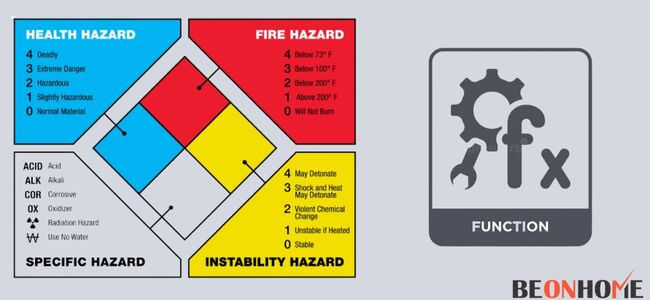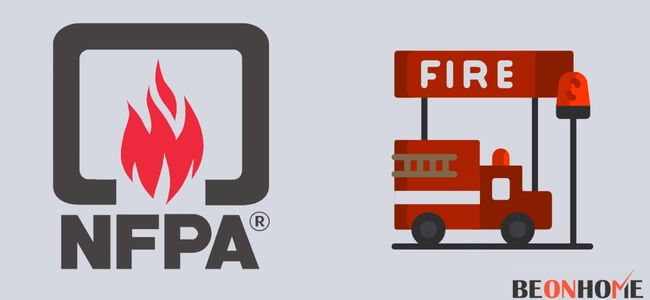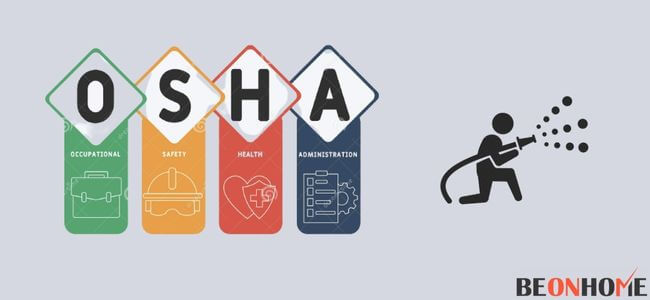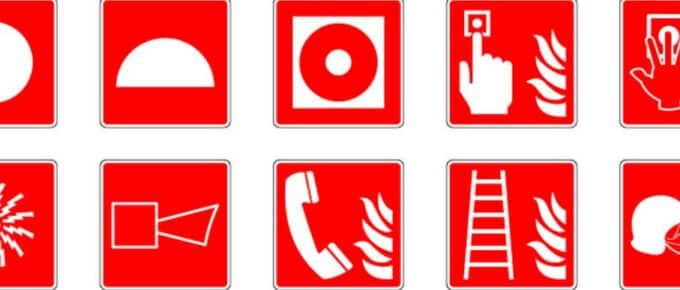NFPA is a not-for-profit organization. It delivers knowledge and information to the public to prevent fire and other risks. It publishes more than 300 codes and standards for the safeguarding of people. They have certain codes and standards to follow. These codes and standards inform people what they should do and how they should do it. A variety of people volunteer and put their efforts into making these.
What is NFPA and what are its functions?
Quick Navigation

The National Fire Prevention Association (NFPA) is an American non for profit organization. It works for the public welfare by promoting its safety standards.
It educates, trains, and advocates for fire and electrical-related hazards. It was established in 1896 to standardize the use of fire sprinkling systems. NFPA’s primary goal is to increase fire and electrical safety awareness.
It emphasises a specific safety topic each year. NFPA also sponsors its program every week in October for greater outreach.
NFPA diamond is a safety sign. It gives valuable information to identify the dangers posed by hazardous materials.
It disseminates safety-related information, including building codes and hazardous response procedures. It also informs firefighters about the types of equipment they should use.
Functions
- Disseminating information about the causes of fire and its risk.
- Educating people about the threats of death and injury. It can be due to fire and electrical hazards and how they can eliminate them.
- Advising on how to stay prepared to overcome such threats.
- Providing safety tip sheets and community tool kits.
- Organizing events and conferences.
- Organizing fire education programs.
- Preparing lesson plans.
What are the most important codes?
NFPA releases more than 300 codes and standards. It minimizes the hazardous risk of fire and other risks. Some of the essential NFPA codes are-
1. NFPA 1
The most critical set of guidelines falls under this standard. It is the fire code. It provides an integrated approach to fire regulation and hazard management. It works for the continuous advancement of the life safety of the public.
2. NFPA 70 A
The national electric code covers guidelines for safe installation. It covers electrical pieces of equipment and wiring. It sets specific standards for electrical safety in factories and offices.
3. NFPA 70 B
This standard focuses on maintaining electrical pieces of equipment. It offers certain practices on how one can keep their employees safe. It informs how to maintain the electrical pieces of equipment timely.
4. NFPA 15
This standard ensures fire control and prevention guidelines. It also ensures the testing of equipment installed for fire protection. It also describes the requirements for the maintenance of high-speed water spray systems.
Is NFPA standard law?
NFPA standards are not compulsory laws that we have to obey. But it should be, as it gets difficult for companies and agencies to get the necessary commitment. They were even arranging the funds to make the required changes and improvements in safety.
These standards should be made mandatory as they are only designed to help. They ensure the safety of the public by ensuring the risk of fire.
NFPA has no authority to make these codes and standards a law. These codes and standards are only recommendations.
That is why these are not enforceable. Still, some states and local governments define these recommendations as government law. These standards are free to access online.
What are the standards in the fire service?
There are two primary standards of fire safety. Read the information provided below to know the various fire service standards.
i. NFPA

The first and foremost is the National Fire Prevention Association. It is very popular and highly reputed. It was founded in 1896 by local citizens to standardize the fire sprinkling systems. All levels of government adopt it because of its effective standards.
Its sole mission is to reduce fire and electrical hazards. It researches, trains, and educates people about the same.
It also organizes educational campaigns and programs to inform the people. It informs about the fire’s causes and the risks related to it.
It publishes more than 300 codes and standards. Each NFPA standard gets revised every 5 years. It is to keep it updated according to the new technologies about fire protection. Anyone can participate in the process of NFPA as it is easily accessible online.
ii. OSHA

The Occupational Safety and Health Act was established in 1970 by congress. It was formed to ensure the health and safety of labourers and workers.
Several states follow their own OSHA standards. Still, OSHA standards are less in demand than NFPA standards.
OSHA informs workers how to prepare and protect themselves before and after a wildfire. They teach people emergency action plans, evacuation plans, and procedures.
What NFPA standard covers safety in the workplace?
NFPA 70E covers safety in the workplace. This standard covers the electrical safety of employees in the workplace.
It focuses on practical safeguards so that workers can be productive in their jobs. It includes practices of a safe working zone.
It must employ safety-related practices to prevent injuries such as electrical shock. Employers are emphasized to wear PPE kits while working on arc flash.
The primary requirement before the work is to assess the risk. It must assess a procedure that keeps the employees away from risks.
It should follow the risk control methods to keep the employees safe. NFPA 70E is not a mandatory standard. But it is a must for an employer to assess this in the workplace under 29 CFR 1910.335(a)(1). (i).
Otherwise, in the death or injury of any worker, OSHA can call the employer. He can be summoned under the general duty clause.
What is NFPA’s mission, and what are its programs?
NFPA’s only mission is to eliminate deaths, injuries, property, and economic loss. The losses could occur from fire and electrical hazards.
It also organizes educational programs, tools, and specific resources for audiences. Some of its well-known educational programs are-
- Fire prevention week- It addresses a specific theme annually for fire safety.
- Learn not to burn- It addresses the leading causes of injuries and death among children.
- Remembering when addresses the main cause of death and injuries among the older ones.
Why do we need a life safety consultant?
Saving the life of any individual from specific threats is essential. So, NFPA has developed certain codes and standards to save people’s life.
Its mission is to safeguard anyone exposed to fire, electrical hazards, or under building construction. As the codes and standards frequently get updated, an organization requires a person to keep up with every update.
Because NFPA codes are very effective, and if we miss out on something, we are putting people’s lives in danger by being unaware of the possible threats.
So, here comes the responsibility of a life safety consultant. He is knowledgeable of the safety codes and standards and will ensure that we comply with what is in the code and not with what is not in use.
He will physically inspect all life safety aspects thoroughly. He will check everything in detail, from hazardous areas to corridors and suites, emergency preparedness, medical equipment, security, hazardous materials, fire safety, etc.
His work is to review all the safety documents and do a mock survey test to check out strengths and weaknesses in the working condition.
Final Talk
NFPA is a consensus of life safety codes and standards. It is a private organization that works to create codes and standards. It is not enforceable. Even if a company chooses not to follow its codes, it will not face legal consequences. But still, many companies adopt its standards. It improves fire safety, chemical safety, and safety from other hazardous materials.
NFPA standards are effective for any business type, whether small or big. Owners can keep their organizations safe and can be by saving money in the long run. It reduces and saves everyone from the imminent threats posed by certain working conditions. Many governmental agencies adopt even NFPA standards to put them into practice.






Leave a Reply